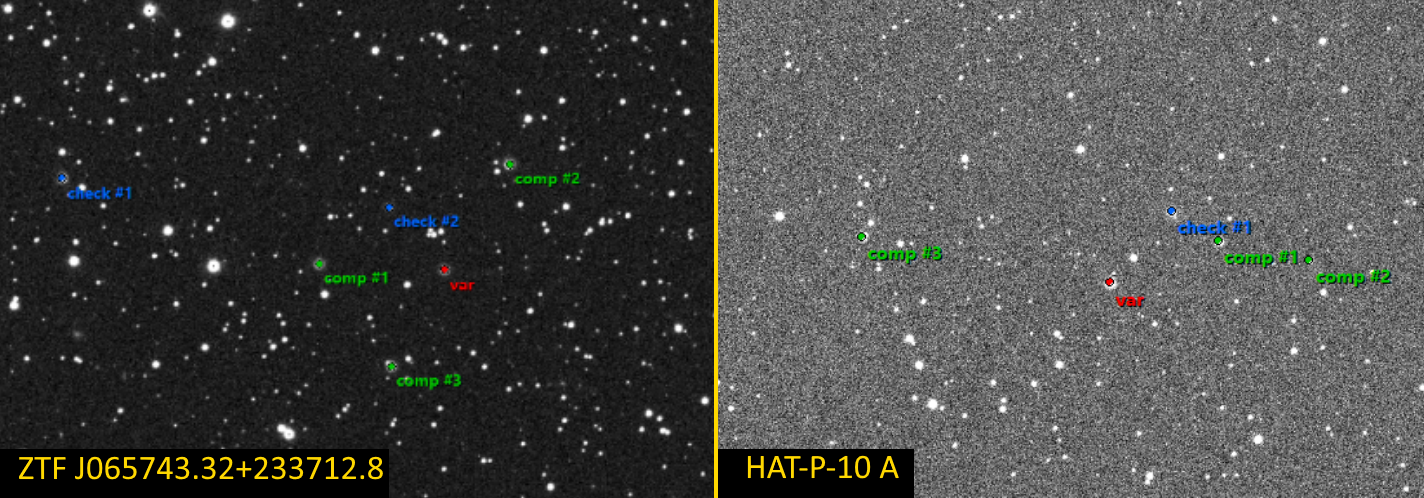Patrick Sekyra & Björn Sievers
Due to the lab course “Fortgeschrittenenpraktikum” at TU Darmstadt we had the opportunity to use the universities remote observatory TURMX. One object – ZTF J065743.32+233712.8 – was chosen by us to observe in the night of the 13th of February in 2021, while the other object – an exoplanetary transit of HAT-P-10 A – was analyzed from older data on 5th of December in 2020. For the photometry we used Muniwin and for the curve fitting we used Matlab.
Through differential photometry, which is easily performed via Muniwin, the light curve of our first object – ZTF J065743.32+233712.8 – was generated and fitted with a finite Fourier series (Kmax = 9 terms, see figure). Due to other frequency modes the choice of starting points for the Fourier series will impact the precision, so we chose two different starting points to try and capture any overlaying frequencies. This method would become more precise the more data we have gathered, so in this case it’s rather limited. The parameters we could derive from the Fourier fit suggested a period of (0.0695 ± 0.0010) days and an amplitude of (0.2449 ± 0.0535) magnitudes.
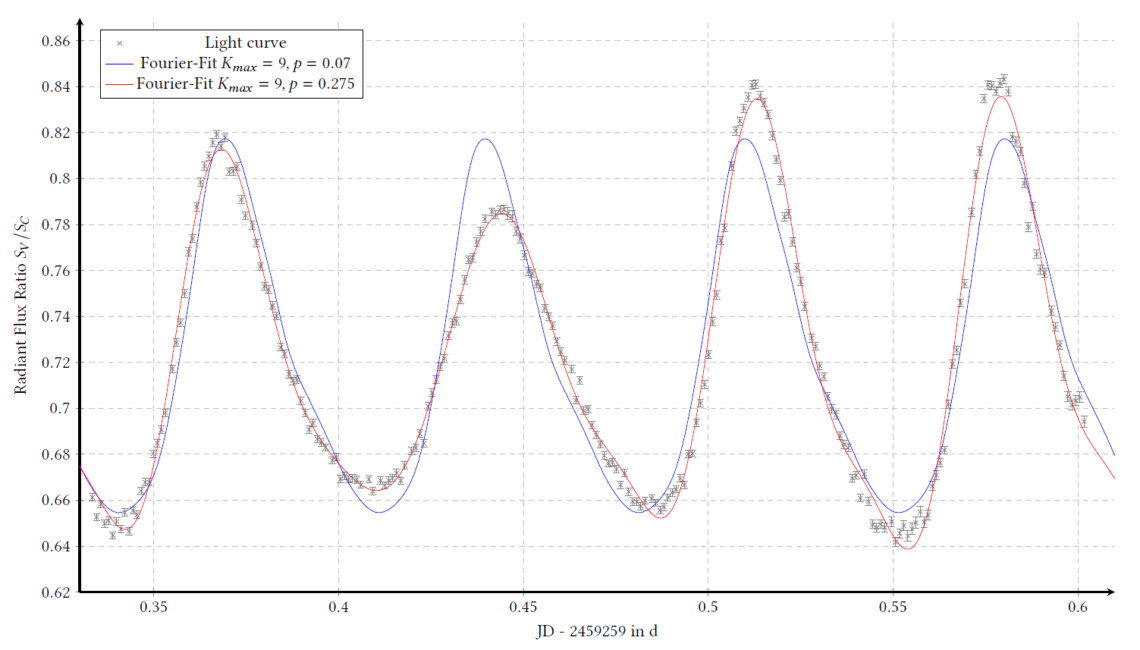
The second object – exoplanet HAT-P-10 A b transit of HAT-P-10 A – was analyzed using a trapezoid fit function and the automated fit function of the Exoplanet Transit Database (ETD, Link: http://var2.astro.cz/ETD/), which does account for limb darkening (see figure). From the parameters we derived a transit duration of (156 ± 11) minutes and a transit depth of (0.0250 ± 0.0093) magnitudes with the trapezoid fit [compare to ETD’s fit: transit duration of (156 ± 3) minutes; transit depth of (0.0260 ± 0.0010) magnitudes].
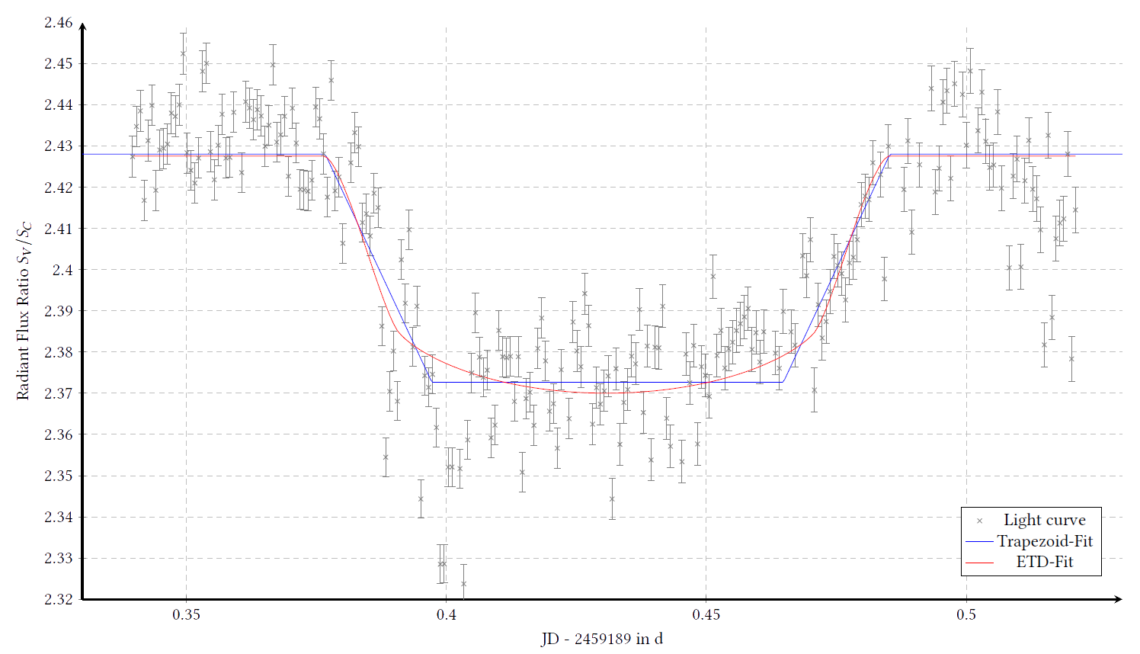
Within the frame of our observation of ZTF J065743.32+233712.8 we also found an interesting object at equatorial coordinates 06h 57m 20.74s +23° 32′ 14.0″, which appears to be a binary star system of two stars eclipsing each other periodically with a period of only (0.300 ± 0.025) days and an amplitude of (0.26 ± 0.03) magnitudes. This may suggest the stars are very close to each other, almost in contact.
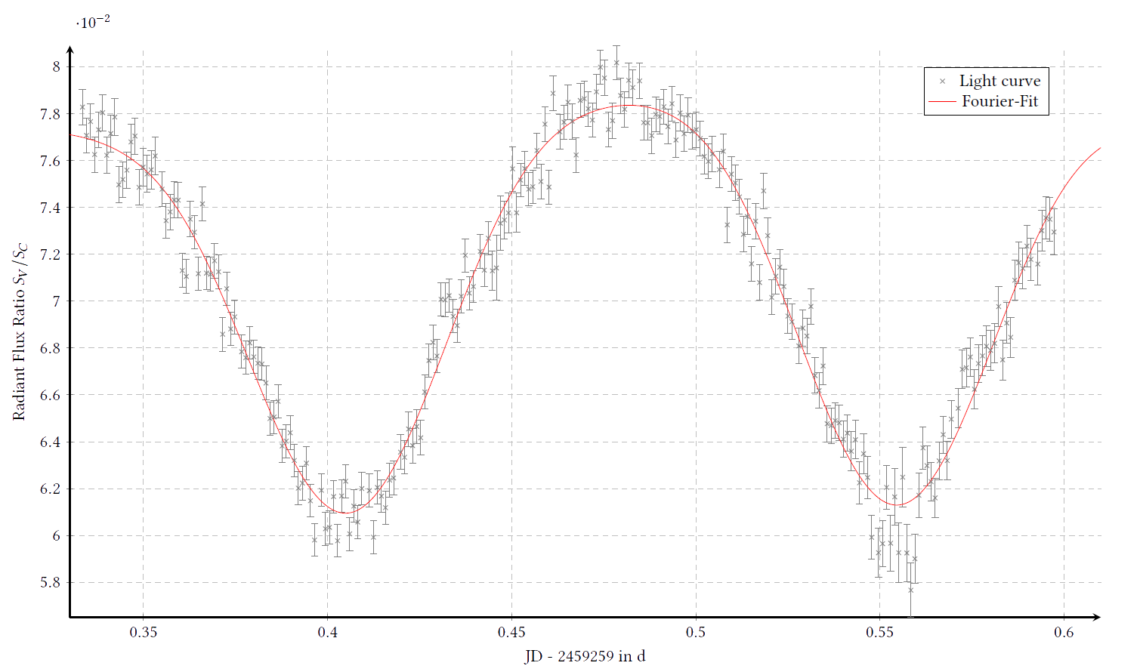
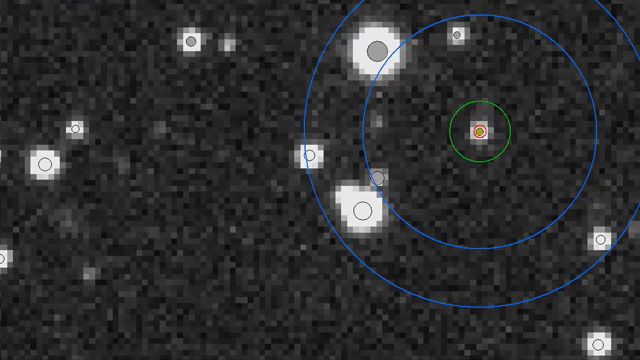
Another intersting object we were able to catch within our observation of ZTF J065743.32+233712.8 was an asteroid moving across the frame, which could be identified as (5082) Nihonsyoki, a 13.3km diameter main-belt asteroid (Link: https://ssd.jpl.nasa.gov/sbdb.cgi?sstr=5082). Its movement can be seen in the GIF.

